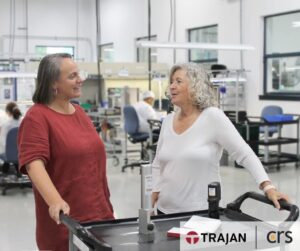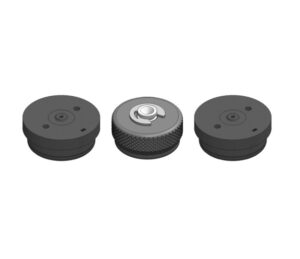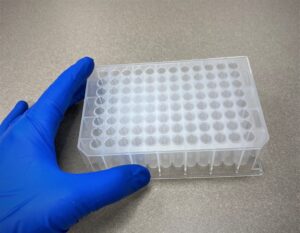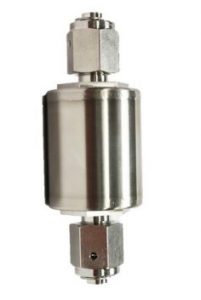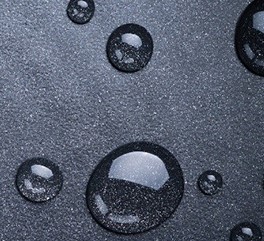The Chemistry
If you have any one of our ZPureTM CO2 traps in your lab, you have probably read the Safety Data Sheets (SDS). If not you can find any of our gas purifier SDS on the individual product pages of www.ChromRes.com under the “Documents Tab”. In any case, it’s no secret that all the CRS ZPureTM CO2 traps contain sodium hydroxide (NaOH)—and lots of it. Here is how the chemistry works in CO2 scrubbing:

The NaOH-containing adsorbent holds enough water to facilitate the first reaction step, which converts the carbon dioxide into carbonic acid. In the second step, sodium hydroxide reacts with the carbonic acid to form sodium carbonate and water. Some of the water generated in the second reaction step is used to facilitate the formation into carbonic acid in the first reaction step. Excess water is scrubbed by a desiccant downstream of the NaOH-containing adsorbent. The reaction is very efficient and reduces CO2 to the low ppb level.
Why CO2 Traps Require Dry Gas
NaOH is deliquescent. If you sprinkle NaOH pellets in a petri dish, you will see it begin to glisten as it picks up moisture from the air. Shortly after, it will become a goopy sludge, and after some time, it will turn into a dry white solid, as it reacts with the CO2 in the air to form sodium carbonate. We definitely want to prevent any goopy sludge from forming in our ZPureTM CO2 traps, which is why we require dry inlet gas. While it is true that ZPureTM CO2 traps have a small amount of desiccant upstream of the NaOH-containing adsorbent, this desiccant is only intended for polishing the inlet gas. We recommend that the inlet gas have a moisture content of less than 10 ppmv (-60 °C dewpoint). For bulk H2O scrubbing upstream of a CO2 trap, consider installing a ZPure H2O, or SPure H2O as a first line of defense against moisture contamination.
Why CO2 Traps Cannot be Reconditioned
As the ZPureTM CO2 adsorbs carbon dioxide, the gas purifier gains mass. Because of the sodium bicarbonate formation, the adsorbent swells. Over the lifetime of the gas purifier, the NaOH-containing material begins to aggregate. When the purifier becomes depleted, the sodium carbonate becomes impossible to remove from the cylinder.
If you are looking for performance specifications on our filters you can refer to our gas filter brochures here. We’ve worked with people across multiple industries who have requested gas purification for various flow rates. Our sales team is well equipped to help you estimate capacity and purifier life for off-nominal flow rates. For inquiries, please contact Sales@ChromRes.com. Or fill our the form below.


